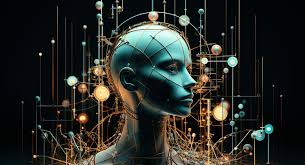
As artificial intelligence continues to progress at a rapid pace, generative models have emerged as powerful tools capable of creating content with human-like creativity. These models are revolutionizing domains such as digital art, music composition, text generation, and synthetic media creation. At the heart of this innovation lies one essential component: neural networks.
This article delves into how neural networks enable machines to generate new content, the types of networks most commonly used, and their critical role in generative artificial intelligence.
What Are Neural Networks?
Neural networks are algorithms modeled after the human brain, comprising layers of interconnected units known as neurons. These layers—input, hidden, and output—process and transmit data by adjusting weights and biases, using activation functions to extract meaning and detect patterns.
Unlike conventional rule-based systems, neural networks adapt by learning from examples, making them particularly effective when dealing with complex, unstructured datasets such as images, audio signals, and natural language—key elements in generative applications.
Why Neural Networks Power Generative AI
Generative AI systems are designed to create new data by recognizing and mimicking underlying patterns in existing datasets. Neural networks are especially well-equipped for this role because they:
- Discover intricate, non-linear relationships in data
- Process high-dimensional information such as visual pixels or word vectors
- Generate variations that resemble the training data while remaining novel
- Support learning from limited or unlabeled data, a key trait for creative tasks
These features make neural networks the foundation for many modern generative algorithms.
Essential Neural Network Types in Generative Systems
1. Feedforward Neural Networks (FNNs)
As the most basic neural architecture, FNNs consist of sequential layers where data flows in one direction—from input to output. While they can be used to generate outputs from random inputs, their lack of memory and limited depth reduces their effectiveness for complex generation tasks.
2. Convolutional Neural Networks (CNNs)
CNNs are specialized for analyzing visual content. They use filters to identify features like edges, textures, and shapes, making them ideal for image synthesis, enhancement, and style replication. In generative models such as GANs, CNNs often power both the generator and discriminator modules.
3. Recurrent Neural Networks (RNNs)
RNNs are tailored for sequential data. By maintaining a memory of previous inputs, they can generate sequences like text, melodies, or speech. More advanced variants, such as LSTMs and GRUs, extend their ability to retain information across longer sequences.
4. Transformers
Transformers have become the dominant architecture for language modeling. Unlike RNNs, they process entire sequences simultaneously and use attention mechanisms to weigh contextual importance. Models like GPT and BERT rely on this design to produce coherent, context-sensitive content across various formats, including text and, increasingly, images and audio.
5. Autoencoders
Autoencoders compress and reconstruct input data by learning a compact latent representation. Variational Autoencoders (VAEs), a probabilistic version, introduce randomness into the latent space, allowing diverse and controllable generation. They’re frequently used in voice synthesis, anomaly detection, and chemical modeling.
How Neural Networks Generate New Content
Pattern Recognition and Training
Neural networks are trained using extensive datasets, identifying structures and features in the data. For instance, when trained on facial images, they learn spatial relationships like the positioning of eyes and mouth.
Latent Space Representation
Generative models often use a latent space—a compressed form of the input data—to simplify the generation process. Neural networks learn to translate between raw data and this abstract representation.
Sampling and Reconstruction
Once trained, these models can sample points within the latent space and decode them into new content. In GANs, this involves a generator creating data from random noise, which is then assessed for realism by a discriminator.
Real-World Applications of Generative Neural Networks
Visual Media Creation
Neural networks drive systems like StyleGAN, which generate lifelike human portraits, and DeepFakes, which swap facial identities in videos—often indistinguishable from genuine media.
Text and Language Generation
With transformer-based models like GPT-4, machines can now generate coherent essays, stories, code, and dialogue, thanks to training on large-scale textual data.
Audio and Music Synthesis
Generative audio tools like OpenAI’s Jukebox and Google’s WaveNet use neural networks to compose music or create speech, capturing tone, rhythm, and expression.
3D Content and Design
Neural generative models aid in generating 3D models for use in gaming, industrial design, and architecture, streamlining creative workflows.
Pharmaceutical Innovation
In drug development, generative models powered by neural networks suggest new molecular structures that exhibit desired biological behavior, accelerating research and discovery.
Challenges Facing Neural Network-Based Generation
Data-Intensive Nature
High-performing neural networks require large volumes of training data, posing challenges in domains with limited datasets.
Complexity of Training
Training advanced models like GANs can be unstable, requiring careful tuning and substantial computational power.
Ethical and Social Implications
Generative AI also presents risks, including the misuse of deepfakes, the spread of false information, and potential copyright violations, highlighting the need for responsible development and deployment.
Looking Ahead: The Evolution of Generative Neural Networks
As technology advances, we can expect continued growth and innovation in generative AI. Key future trends include:
- Multimodal Generation: Combining various data types—text, images, audio—within unified models
- Low-Data Learning: Enabling generation from minimal training examples through zero-shot or few-shot learning
- Greener AI Models: Developing energy-efficient architectures to reduce environmental impact
- Human-AI Synergy: Creating collaborative systems where AI augments, rather than replaces, human creativity
Final Thoughts
Neural networks are the driving force behind generative AI, providing the structural foundation and learning capabilities necessary for machines to create compelling new content. From simple feedforward networks to complex transformers and VAEs, each architecture brings unique strengths to the generative process.
As generative models evolve, gaining a deeper understanding of neural networks will be crucial to responsibly leveraging AI’s creative power in a wide range of applications.
Keep following along as we explore more foundational components behind the AI-driven future of creativity.